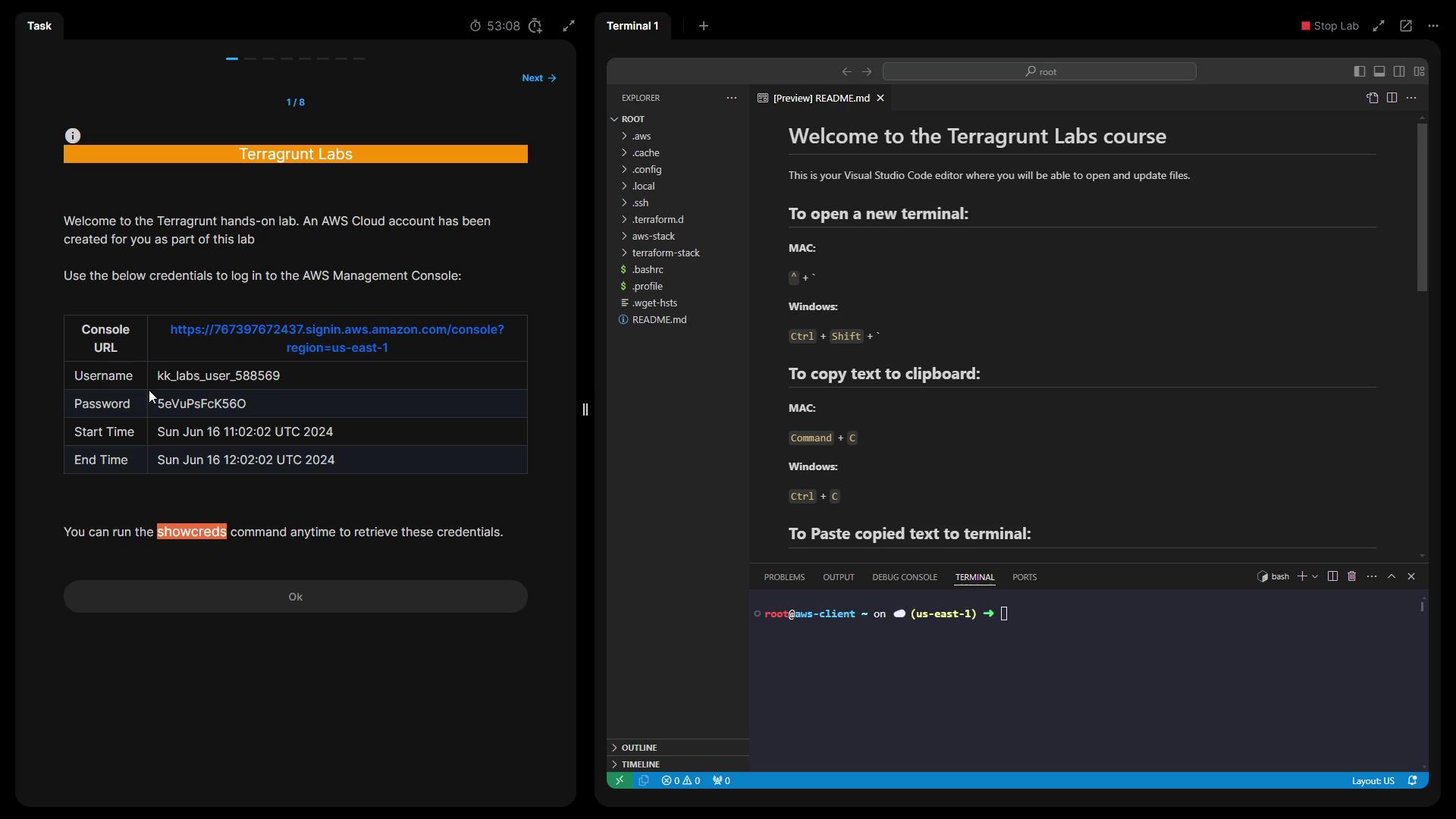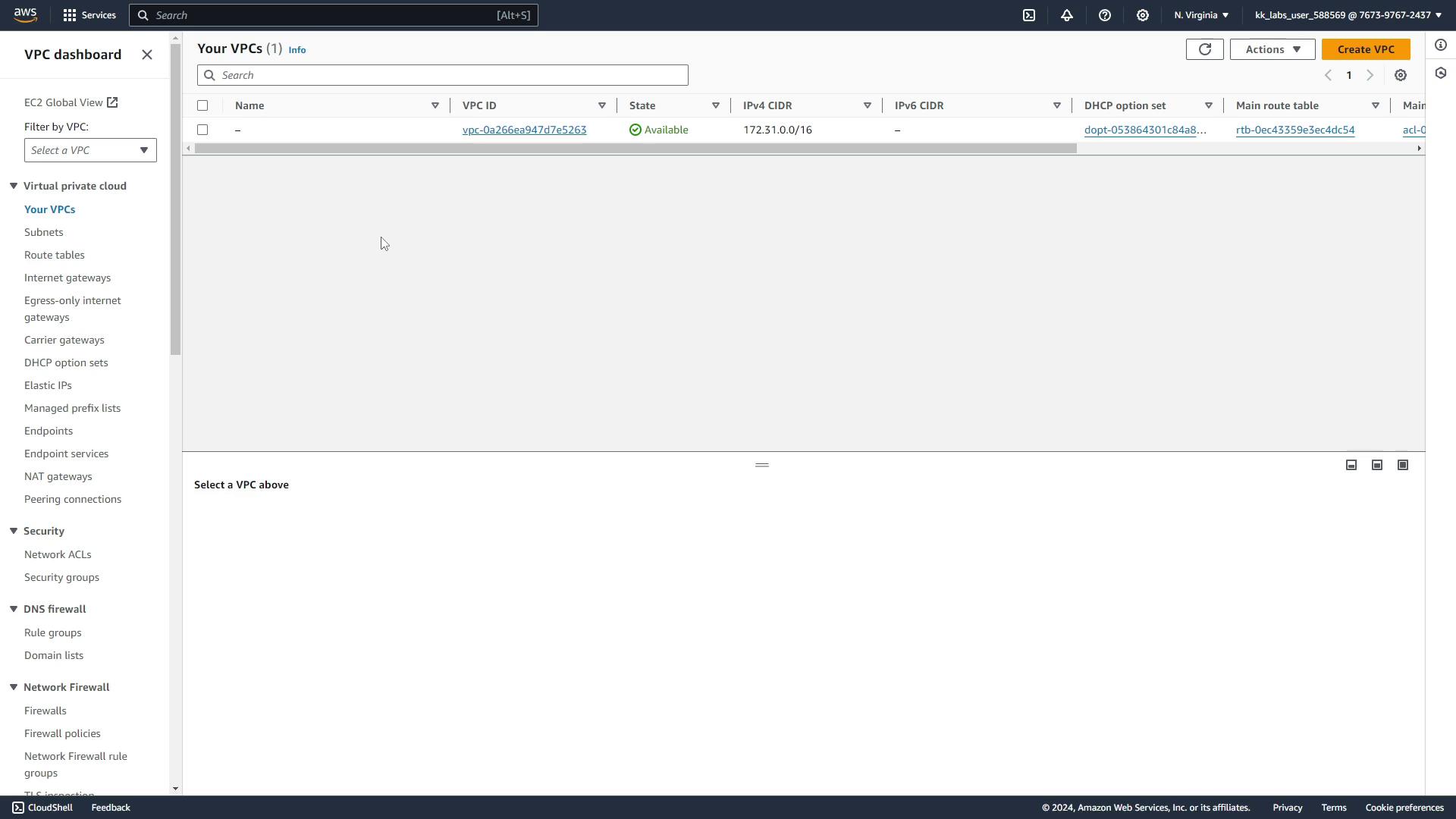Terragrunt for Beginners
Terragrunt Commands
Demo of Lab 2
In this lesson, we’ll authenticate into a temporary AWS lab account, inspect our Terragrunt configuration, and deploy a VPC module. Follow along to learn how to initialize, plan, apply, and clean up with Terragrunt.
1. Authenticate to the AWS Lab Account
When the lab starts, you’ll receive a URL and temporary credentials:

Open the provided URL in your browser.
Log in with the displayed username and password.
If you lose your credentials, run:
show creds
Warning
This lab account has limited AWS permissions. Only perform the tasks outlined in this lesson to avoid permission errors.
2. Confirm Terraform & Terragrunt Versions
SSH into the AWS client server and verify your toolchain:
| Tool | Check Version | Sample Output |
|---|---|---|
| Terraform | terraform version | Terraform v1.8.3<br>Your version is out of date! |
| Terragrunt | terragrunt --version | terragrunt version v0.58.8 |
terraform version
Terraform v1.8.3
on linux_amd64
Your version of Terraform is out of date! The latest version is 1.8.5.
Download: https://www.terraform.io/downloads.html
terragrunt --version
terragrunt version v0.58.8
3. Inspect the VPC Module
Navigate to the aws-stack/vpc directory where the VPC module lives:
cd aws-stack/vpc
Open terragrunt.hcl to review:
terraform {
source = "git::https://github.com/terraform-aws-modules/terraform-aws-vpc.git//?ref=v5.8.1"
}
locals {
vpc_cidr = "10.0.0.0/16"
}
include "root" {
path = find_in_parent_folders()
expose = true
}
inputs = {
name = "${include.root.locals.project}-vpc"
cidr = local.vpc_cidr
azs = [
"${include.root.locals.aws_region}a",
"${include.root.locals.aws_region}b",
"${include.root.locals.aws_region}c"
]
public_subnets = [
"10.101.0.0/24",
"10.102.0.0/24",
"10.103.0.0/24"
]
}
Provider Version Override
To ensure compatibility, this module locks the AWS provider to major version 5:
generate "provider_version" {
path = "provider_version_override.tf"
if_exists = "overwrite"
contents = <<EOF
terraform {
required_providers {
aws = {
source = "hashicorp/aws"
version = "~> 5.0"
}
}
}
EOF
}
Note
Locking the AWS provider version prevents unexpected breaking changes when Terraform and modules update.
4. Initialize the Terragrunt Project
Initialize the backend and download provider plugins:
terragrunt init
You should see:
Initializing the backend...
Initializing provider plugins...
Terraform has been successfully initialized!
5. Plan the VPC Deployment
Generate and review the execution plan:
terragrunt plan
Look for the summary at the end:
Plan: 13 to add, 0 to change, 0 to destroy.
6. Apply the Configuration
Create the VPC resources:
terragrunt apply
Type yes when prompted. After completion:
Apply complete! Resources: 13 added, 0 changed, 0 destroyed.
In the AWS console (US East 1), verify your VPC:

7. Clean Up: Destroy the VPC
Remove all created resources to avoid incurring costs:
terragrunt destroy
Confirm with yes. You’ll see:
Destroy complete! Resources: 13 destroyed.
The AWS console will now only list the default VPC.
References
Watch Video
Watch video content
Practice Lab
Practice lab